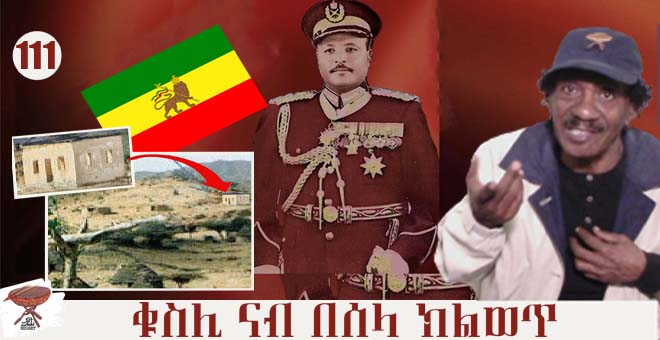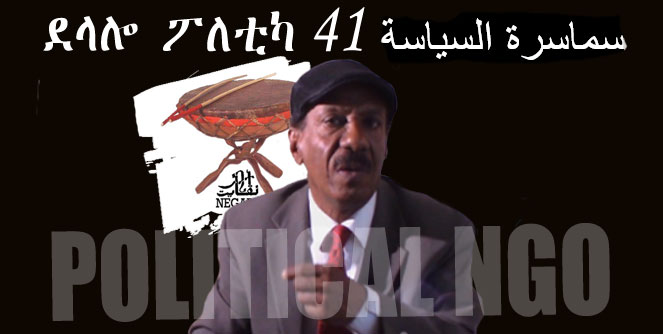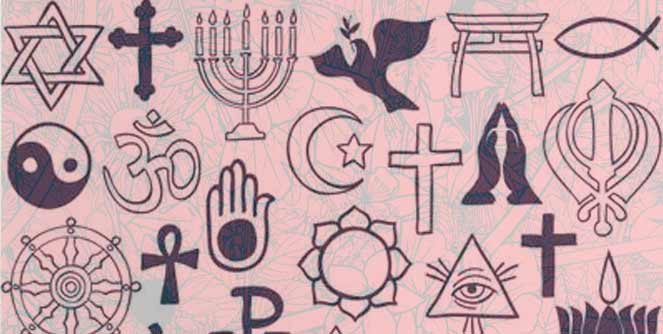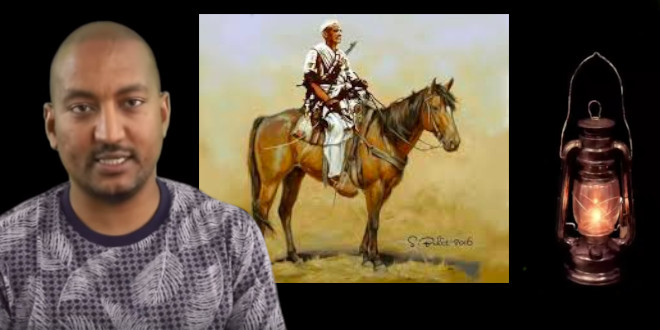The Massacre of Ona and Besekdira: When Scars Replace Wounds
Almost all my generation carry scars on their upper arms. Scars left from the crude type of vaccinations: smallpox, Measles, typhoid, TB, Yellow fever, etc. I say crude because it was not a drop on the tangue, or a pinch with a small needle. They use huge syringe and keep emptying it on your arm. In a few hours it gets inflamed, itchy and ca8ses fever. Then it becomes a sack of pus, a light scratch it oozes, then it develops into a wound, skin peals, the wound take days or weeks until it heals leaving behind a scar. I have several vaccination scars, but they are not painful, just a reminder how it happened.
In Eritrea we have wounds that never healed to become scars. They are painful and we have carried them for many years with no sight of healing. Our wounds would never heal without a proper reconciliation that our self-appointed leaders an aversion to it. And o0ne such would I carry is from the days before and after the massacre of Beskdira and Ona. Let me tell you what shaped my adult life.
I was a ninth grader when my voice started to become huskier, and all my experiences hadn’t prepared him for what was yet to come. I have seen gruesome scenes, but Ona was incomparable to any of them.
One day Jebha guerrillas ambushed an army convoy in a hilly area close to Keren and Halib Mentel, and attacked it. The convoy reached a sharp turn on the highway and the rebels sprayed it with gunfire blasting the leading vehicle. As the vehicles behind the lead truck stopped, soldiers jumped off the trucks and run for cover. The Jebha combatants identified the prize target and a sharpshooter trained his gun on him and pulled the trigger killing the decorated General Teshome Ergetu, the commander of the 2nd division of the army. He died instantly. The rebels retreated and disappeared behind the hills. Support helicopters arrived a bit too late and failed to locate the rebels. They ended up carrying the bodies of the soldiers they had come to rescue.
The army closed the Keren-Asmera road and the news about the general’s death spread quickly. Angry soldiers went on a rampage unleashing their rage at anyone they found on the street. No one knew how Colonel Welaana, the commander of the Keren garrison would react, but everyone had a hunch he would avenge the death of his commanding general with brutal force.
Colonel Welaana planned his revenge for ten days and on November 30, 1970 his troops cordoned Besekdira a village about 9 kms north of Keren. They ordered the Muslims to stand on one side and the Christians on the other. But anyone familiar with the region knows that is a meaningless segregation as the Blin and Mens’a tribes are kinsmen. They refused to be separated and were driven to the village mosques together. The soldiers cocked their guns and through the door and windows sprayed the villagers with bullets. They killed 160 villagers. Only a few survived the slaughter by staying buried beneath the dead. The troops left Besekdira a ghost town and returned to town to celebrate.
It was the eve of Eid holiday and the shocking news reached Keren as people were preparing to celebrate the holiday. In those days Eid was not even an official holiday in Haile Selassie’s calendar though the population of Keren was overwhelmingly Muslim. The government decided only Muslim students should take the day off while Christians stayed in school. On Eid day, December 1, 1970, people didn’t know how to celebrate when the blood of the victims of Besekdira was still fresh.
After mass prayer and breakfast, I took a long stroll with the neighborhood boys. We walked towards the west of town passing under the foot of the Tigu fortress which seemed calm except for some movement of army vehicles. The Ethiopian flag flapped gently on the Tigu fortress. We passed the old hospital building and the new one built by Mr. Hugh, through the government house, crossed the street into the public park and continued through gthe looped road back towards the town center—we planned to have tea at Ajak’s teashop.
On our way we stopped at the cinema house to check what was showing and saw a poster of a Western movie starring Clint Eastwood: Il Buono, Il Brutto, Il Cattivo, and another Indian or Egyptian black and white movie.
Suddenly they heard a sound of a distant gunfire coming from the northern part of town. Then the deafening sound of machine gun fire started to blast from the Tigu fortress where smoke was rising to the sky.
We hurried towards the town center and stopped by an open area where some crowds were forming. A thick black smoke went up from the hills over Ona, a village about a kilometer away from Keren on the road to Sahel. We hurried towards that direction, to the edge of town close to the goldsmiths’ street. Unable to see anything, we moved close to the elementary school for a better view. On the hills of Ona we saw soldiers who appeared the size of ants running towards the neighboring village of Waaliko; they chased and shoot at the running people. Ona was ablaze, it was burning. Besekdira could have been a prelude to a greater massacre.
On the side of the street, a few shopkeepers shut their shops and hastily moved away. What would follow next? Will anyone escape the fate of Ona? No one wanted to die in the streets, a bad way to die. If it was inevitable, I wanted to go home and await death in my house, with my family, with my loved ones.
Moments later, the streets cleared out completely as a few people moved aimlessly to one direction and then to another, looking up and down as if expecting something to drop from the sky. The door of the sky remained shut that day—even mercy didn’t find its way down. We hurried to our neighborhood and sat in an alley trying to make sense of what we saw.
My mother appeared at the door worried and begged me to get inside. She forgetting I was a ninth grade student, no longer a child to be ordered around! She looked distressed, “It is not safe outside,” she said helplessly, trying to hide half her worries. Having stayed in the house all day, she didn’t have the slightest idea how unsafe it has become. I stayed in the secluded area where I spent many evenings during the hours of the curfew, the alley that Ambess the dog had once ruled and had banished me from it.
By the third day, some shops opened but the road to Ona and the surrounding areas remained closed by a heavy military presence. Vultures glided on the skies over Ona and the smoke refused to clear up. For three days after the massacre, Colonel Welaana denied the people permission to bury the dead as vultures and hyenas feasted on their bodies.
The day I returned to school, I looked at Ona from my first-floor classroom window and I couldn’t turn my eyes away. It felt so close I could throw a stone and hit a charred tree on the hills of the beleaguered village. Suddenly I heard a student shout on the outside, “Permission obtained. Permission obtained,” shouted a student, “Go to bury the dead!” I could see a crowd walking towards Ona. The whole class came to the windows to look. Ligaaya Villanueva, our Filipina math teacher walked out of the class to find out what was going on. The class followed her out.
That day the elders of the town had met Colonel Welaana and begged him to allow the burial of the dead; expensive gifts and bribe money relaxed Colonel Welaana a little. He finally yielded: “If the rebels do anything here, Ona’s fate awaits Keren,” he threatened, “You need to convince your bandit children to stop. Now go, you have until curfew time to finish burying the bandits of Ona.” he said.
The whole town mobilized for the job though no one had any idea what to expect once there. I and my Beshir joined the students and walked to Ona taking a shortcut, crawling from under the barbed wire fence of the school. We crossed the open space to the citrus gardens and crossed the dry Daari River. Some students climbed the hills towards Ona; I and my friend Beshir went through the dirt highway to Sahel and arrived at the village to find mounds of charred bodies and wood still smoking.
The village was devastated. One couldn’t tell whether the many heaps were debris of charred huts or remains of animals and people. A strange suffocating odor of noxious odour filled the village—burned huts, grain, animals and people. It smelled of a burned grilling meat. It smelled of death. And for the first time the stench of death didn’t carry the smell of DDT which I associated to death since the afrmy hanged Eritrean fighters they killed. They sprayed them with DDT to kill the odor of the decomposing bodies.
The day death arrived at Ona, most of the men had left to town for the Eid prayer. Women, children, the old and the sick remained in the village donning their best clothes and jewelry. But a few hours into the day, they Ethiopian army killed them. Charred bodies, blood-soaked bodies of children and women with open bellies lay strewn around, some burned while sleeping, others charred in squatting positions.
A near-death tired baby was found sucking the breast of his dead mother. I saw the ripped ear lobe of women, an obvious sign of a fiercely snatched tellal, a pricy crescent-shaped golden earring. Janhoi’s army didn’t only shoot the people; they robbed Ona of its meager wealth. The villagers had put on their best clothes for the holiday when when death arrived. It was White, the color of death. Some clothes shined under the sun and flapped with each gust of wind and each breeze that carried the stench of death.
The students combed far areas around the villages in search of bodies. Spotting a half-burned house, I and Beshir approached to check. Inside, under what used to be a bed, the body of a woman had turned into charcoal. She must have been crawling on all fours trying to hide under the bed when the merciless shot hit. We removed the charred bed frame and prepared to lift the body. I held the body by the hands and Beshir lifted it by the leg but suddenly a leg snapped off and remained in his hands. He was stunned and stood there; I felt a sudden nausea and I threw up some acidic, yellowish liquid. It was then that Hamid the Muezzin, the prayer caller, came to our rescue and stared at us in disgust.
Ashamed for not being courageous enough, I faked courage while Beshir tried to put on a brave face. How we felt didn’t bother Hamid. He didn’t feel sorry for us. It seemed he would rather have us see life in its ugliest form. He brought a large piece of a fabric and showed us how to lift charred bodies. Sliding a plywood panel under it, he lifted the body and dropped it on the fabric. He told us to pick the pieces that looked like body parts and add them to the pile on the fabric which we then tied and moved to a fresh grave. The Muezzin looked at us sternly, “You need to throw your feelings away, be strong!” He said. The Town Mueszzin didn’t saty long after that. One morning the soldiers entered the mosques, dragged him out and slit his throat.
People with shovels and pickaxes were busy digging graves. No one told the other where to dig: they just dug holes everywhere and lowered the closest body they could find into it. But as it was getting late, there was not enough time to bury the bodies in separate graves. Frantic digging of mass graves began at the entrance to the village; curfew time was approaching fast and Colonel Welaana’s orders dictated that the burial be finished before curfew time at six in the evening.
A little after three o’clock, long and deep meandering ditches were dug and the people laid rows of bodies in them. Mr. Hugh’s Land Rover pulled close. He unloaded bundles of white Abu Jedid fabric, kefen, the affordable clothing for the poor and a burial shroud for the dead. The townspeople had already brought many bundles, but it was running short. I busied myself cutting shrouds into nine-meter pieces. The people of Ona deserved a clean shroud on their final voyage.
Mr. Hugh’s Lalemba charity had inaugurated a new hospital a few months earlier. Now he was in Ona, distressed like everyone else as sweat mixed with dust left patches of mud on his khaki shirt. Of all the foreigners in Keren, he was the only one I saw at Ona.
Some wounded villagers had survived for three days in hiding. Mr. Hugh took them to his new hospital on his Land Rover. A few must have died on the way. But his efforts didn’t go well with Colonel Welaana, the butcher of Besekdira and Ona. He wanted Mr. Hugh out of Keren at once. The colonel didn’t want any foreigner around to witness when he carried out his next massacre.
Finally, the sun moved towards its hiding place leaving behind amber linings. It shined through the dust that engulfed the village. I looked at my hands, clothes, and the land around me: everything covered in soot.
As the men dug the graves Haji Abdelmoula stretched inside the holes to check if the holes were wide enough for the comfort of the dead! He rolled from one side to the other and nodded in approval before climbing out. I stepped backwards, a few steps, and looked at the holes whose mouths were ready to swallow anything thrown into them, like that of a monster.
It was getting late. Around three-hundred bodies had already been buried in separate graves, and around that many bodies were lying around waiting to be buried in the mass graves. Wondering why I bothered to count, I had stopped when he counted close to three-hundred more bodies.
About a dozen people jumped into the hole and raised their hands to receive the bodies. The crowd carried the bodies and lowered them to the hands of the men waiting inside the grave. Rows of bodies shrouded in white cloth filled the grave. Dozens of shovels started to throw dirt and slowly dirt covered all the visible white Abu Jedid shrouds. The burial was over. The Muezzin led a short prayer for the dead.
Thereafter, the crowd, exhausted, distressed and angry, started to walk away through the picturesque Ertola citrus gardens and towards the town center. There was no wind and no air around. Like stray animals, the dust-covered crowd streaked away from Ona. No one spoke. No one cried. No one paced faster than the other did. Like the tic-tock of a clock, people lifted one leg and then the other. I looked around and saw dried clay figures that pretended to be humans, walking. Have I turned into clay? Did it matter since I could also face the fate of the villagers of Ona anytime? What if I ended up in a hole buried close to someone I didn’t even know? What happens inside the grave?
I stopped by the garden fence and cried. Warm tears washed the dust and left streaks of mud over my cheeks. I thought I screamed but didn’t hear myself.
The dust on the road became stuffier. I started to walk again and reached an open area. Over the empty land I looked towards the hill from where the machine guns fired the rounds that rained on Ona. I saw the Ethiopian flag waving and wondered what Colonel Welaana, the engineer of the atrocities, was doing at that moment.
On the foothill of the Tigu fortress, my school looked empty and deserted. Why go to school anyway, I asked myself. When I reached the asphalted street, the steps of the people became audible. They walked in a shamble, their feet making a strange screeching sound. The doors of the houses on the street were closed. So was the door of my house.
Just as I was about to knock, as if she knew I was there, my mother opened the door. She tousled my hair but didn’t say a word. That day, I perfected the talent of listening to people speak through their eyes. I heard what she said through her eyes.
That night I don’t remember anything except going straight to bed. A voice echoed in his ears whispered, ‘This has to be avenged!’ I tossed and turned in my bed hearing the voice that kept shouting in my ears. I heard it repeating Justice! Justice! Justice … until I went to sleep.





Awate Forum